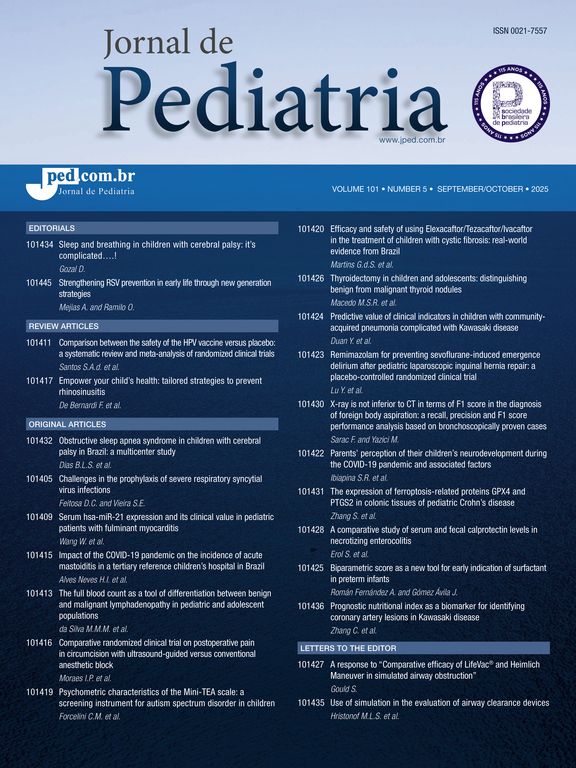Twenty-eight children with septicaemia and positive blood cultures for Klebsiella pneumoniae were retrospectively studied and compared with 190 children with sepsis caused by other organisms, identified or not in blood cultures. Septicaemia due to Klebsiella pneumoniae occurred more frequently in children older than 2 years of age, especially those who had an underlying disease and, therefore, were malnourished or had an impaired immune defense system that had required invasive procedures and previous hospitalization. Although the case fatality rate was high in both groups, Klebsiella pneumoniae did not contribute to elevate the relative risk of death. In this study, Klebsiella pneumoniae isolates were highly sensitive to colistin (92.9%) and cefoxitin (82.1%), but poorly sensitive to third generation cephalosporin and imipenen.
The Impact Factor measures the average number of citations received in a particular year by papers published in the journal during the two preceding years.
© Clarivate Analytics, Journal Citation Reports 2025
SRJ is a prestige metric based on the idea that not all citations are the same. SJR uses a similar algorithm as the Google page rank; it provides a quantitative and qualitative measure of the journal's impact.
See moreSNIP measures contextual citation impact by wighting citations based on the total number of citations in a subject field.
See more







